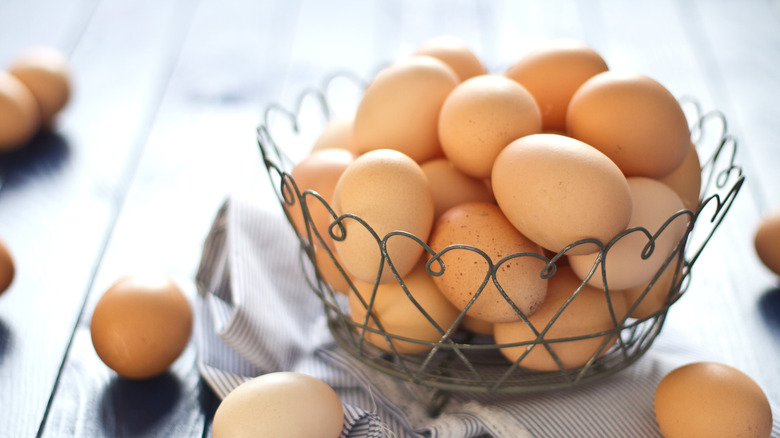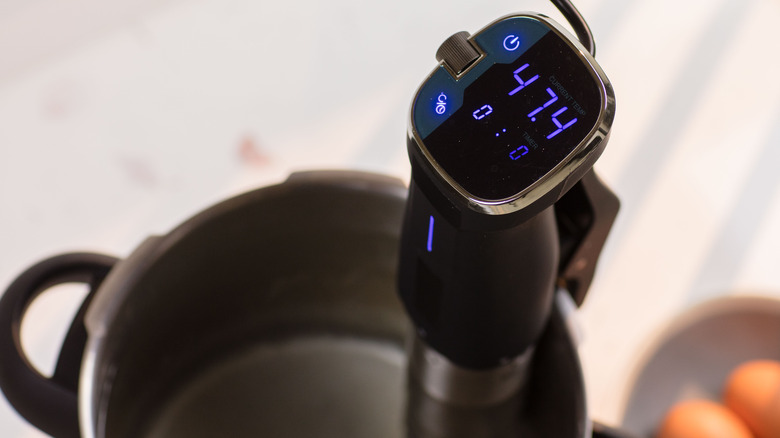Your Sous Vide Works For Pasteurizing Eggs At Home In A Pinch
Raw eggs are essential to many recipes, such as mayonnaise, hollandaise sauce, traditional Caesar dressing, and eggnog. However, you undoubtedly have heard that consuming raw eggs has a chance of making you sick. Hence why Mom always told you not to eat the raw cookie dough! While raw eggs do carry a health risk, pasteurizing them can reduce the risk. Unfortunately, finding pasteurized eggs is easier said than done, as few retailers tend to carry them. Although all egg products outside of the shell, such as liquid eggs in a container, are required to be pasteurized, the eggs you find in the carton are not.
This led to a rise in people taking matters into their own hands by learning how to pasteurize eggs at home using a technique called sous vide. Meaning "under vacuum" in French, this method uses a low-temperature water bath to cook foods inside a vacuum-sealed bag. Since pasteurization uses low heat, below water's boiling temperature, to render microorganisms and bacteria inactive while also stopping enzyme and microbial activity, sous vide seems like the perfect way to make eggs safe at home.
For sous vide pasteurization, an immersion circulator, like the Anova Culinary Sous Vide Precision Cooker can be used. Immersion circulators circulate water at the temperature you set them at, and can maintain a precise temperature for an extended period of time. For egg pasteurization, this would be 135 degrees Fahrenheit for 90 minutes.
Is sous vide pasteurization actually safe?
Although using the sous vide method to pasteurize eggs can work in a pinch, it isn't completely foolproof. Speaking with Simply Recipes, Elisa Maloberti, a food safety expert from the American Egg Board, noted that it's impossible to tell at home whether or not the yolk of an egg has reached the necessary temperature for pasteurization. Maloberti also stated that, although the sous vide method gives people more precise temperature control, she doesn't recommend it.
The difference between at-home pasteurization with sous vide and commercial pasteurization is that commercial facilities have stringent standards and specialized equipment that average folks can't access. Moreover, at-home pasteurization is also susceptible to human error and equipment failures. If your immersion circulator is off by only a few degrees, Salmonella present could remain active and make you sick. This was something the BC Centre for Disease Control in British Columbia, Canada, investigated in 2015 when two Salmonella cases were linked to the sous vide method being used on eggs.
Even though Salmonella only occurs in one out of every 20,000 eggs, older folks, children, pregnant people, and those with compromised immune systems are at a much higher risk of serious illness if infected. While most people will experience diarrhea, vomiting, fever, and cramps that clear up, in some cases, diarrhea can become so severe it requires hospitalization. At that point, the risk of Salmonella spreading from the intestines to the bloodstream increases. Although the sous vide method can help make eggs safer when used correctly, we'd still err on the side of caution if you're in a high-risk category. Otherwise, if you decide you're okay with the risk, be sure to triple-check your equipment, read up on recalls, and don't take shortcuts!

